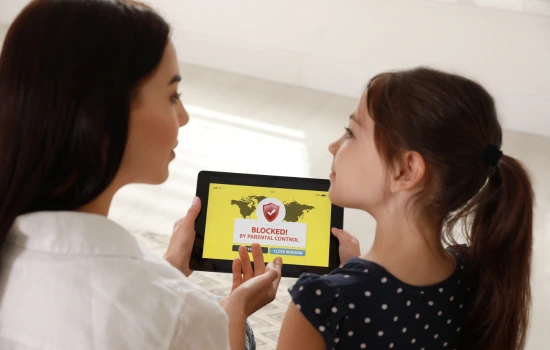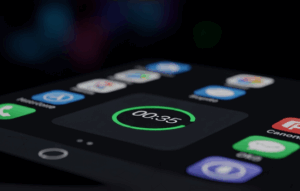Advertisements
Remote access to another mobile phone has become a necessity in multiple contexts: from providing technical support to a family member to monitoring a device's activity for security purposes.
However, it's essential to understand the legal limitations, ethical implications, and proper installation of the apps that enable this feature.
Advertisements
Throughout this article, we'll review the essential steps for downloading and using remote access apps, as well as key points to keep in mind to do so safely and respectfully.
Different types of remote access
Before choosing an app, it's a good idea to define why you want to monitor or check another phone.
Advertisements
See also
- Tea to control glucose
- Learn to Fight Boxing at Home with These Apps
- Learn Karate at Home with These Apps
- Increase the Volume of your Cell Phone to the Maximum with These Apps
- Ashwagandha tea
Some of the main motivations include:
- Assistance or support
There are tools like TeamViewer or AnyDesk that allow you to view and manipulate the other phone's screen in real time, ideal for configuring settings or troubleshooting software issues. - Activity monitoring
There are apps focused on parental control or corporate device management. These typically offer reports on location, call history, or app usage, provided you have the appropriate consent. - File sharing
Some apps allow data transfer without providing full access to the device, which is useful for sharing images, videos, or documents between devices.
Identifying your specific objective will help you select the type of application you really need and, above all, avoid legal or digital security risks.
Steps to download remote access applications
- Research and choose reputable apps
Make sure you choose apps with a good reputation and track record. Read reviews from other users and check out the ratings. The broader the download and review base, the more reliable the tool tends to be. - Always download from official channels
- Google Play (Android): The safest way to get apps for your Android phone.
- App Store (iOS): The official store for Apple devices.
- Developer's website: In some cases, well-known companies offer direct downloads from their website.
- Install and configure
Follow the on-screen instructions once you've downloaded the app. You'll usually be asked to create an account or link both devices (yours and the one being monitored). Perform the necessary tests to confirm that everything is working correctly. - Check for updates
Keeping your app on its most recent version ensures that it has security patches and functionality improvements.
Important Tips
- Consent is Fundamental: Certify that you have permission to monitor the device, avoiding violations of privacy or local laws.
- Security: Download applications from only two official sites to avoid malware or counterfeit apps.
- Compatible Devices: Check the compatibility of the application with the operating system of the device you want to monitor.
Some featured applications
Below are some popular options for different remote access purposes:
TeamViewer
- Characteristics: Allows you to control the remote cell phone, transfer files, and use the chat to give instructions.
- Frequent uses: Remote technical support and enterprise device management.
- Where to download: Google Play, App Store or the official TeamViewer website.
AnyDesk
- Characteristics: Fast and stable control, with chat functions and file sharing.
- Frequent uses: Teleworking, customer support, software troubleshooting.
- Where to download: Available in the official store of each operating system or on its website.
Parental control applications (Qustodio, Family Link, etc.)
- Characteristics: Screen time monitoring, app locks, real-time location and browsing reports.
- Frequent uses: Supervising minors and managing devices in family environments.
- Where to download: On both Google Play and the App Store, always check that they are original versions.
Legal and ethical aspects
Remotely accessing a device without consent can have serious legal consequences. To avoid problems, it is essential to:
- Confirm consent
If the phone belongs to an adult, they must explicitly authorize the installation of any monitoring software. - Review local legislation
Depending on your country, unauthorized monitoring may be classified as a serious crime. - Limit use to what is necessary
Even when permission exists, it is best to exercise control in a proportional and transparent manner, especially in cases of parental or administrative supervision.
Data protection and security
When accessing information from another phone, you are handling sensitive data that requires maximum security:
- Passwords and encryption
Make sure the app uses data encryption protocols and creates strong passwords. - Use of antivirus or scanning tools
On some devices, having a good antivirus helps eliminate harmful files or malware that exploits remote access. - Constant updates
Both the operating system and applications must be kept up to date to prevent vulnerabilities. - Disable unnecessary connections
If you're not going to use the app continuously, log out or disable access permissions when no longer required.

Key points for responsible use
Remote access to another person's phone carries with it great responsibility. Beyond the technical utility these tools offer, it's essential to maintain ethical and respectful conduct with other people's data. Clear communication with the device owner, establishing limits, and constantly monitoring the app's security are key factors in avoiding any misunderstandings or legal violations.
Remember that the "Important Tips" mentioned above—consent, security, and device compatibility—must be followed at all times. If you're only looking for occasional assistance with technical issues, be sure to use apps designed specifically for that purpose. If your motivation is parental supervision, verify that the app is suitable for minors and has reliable child protection features.
Staying informed, downloading only from official sources, and respecting the privacy of those involved are the pillars of proper remote access. This way, you'll achieve your monitoring or assistance objectives without compromising security or violating fundamental rights.




